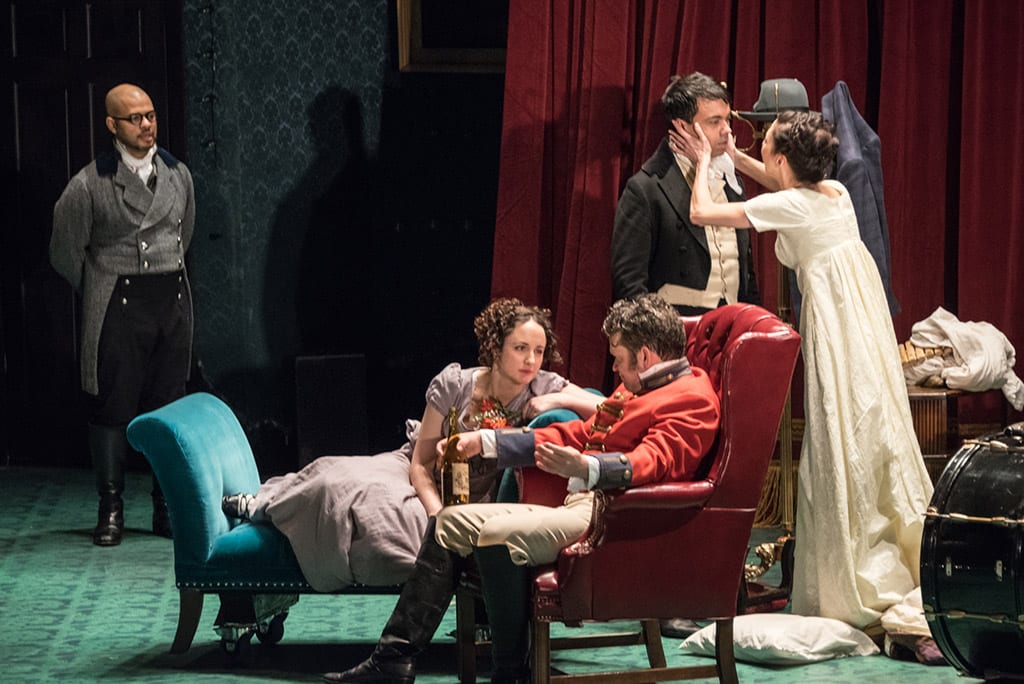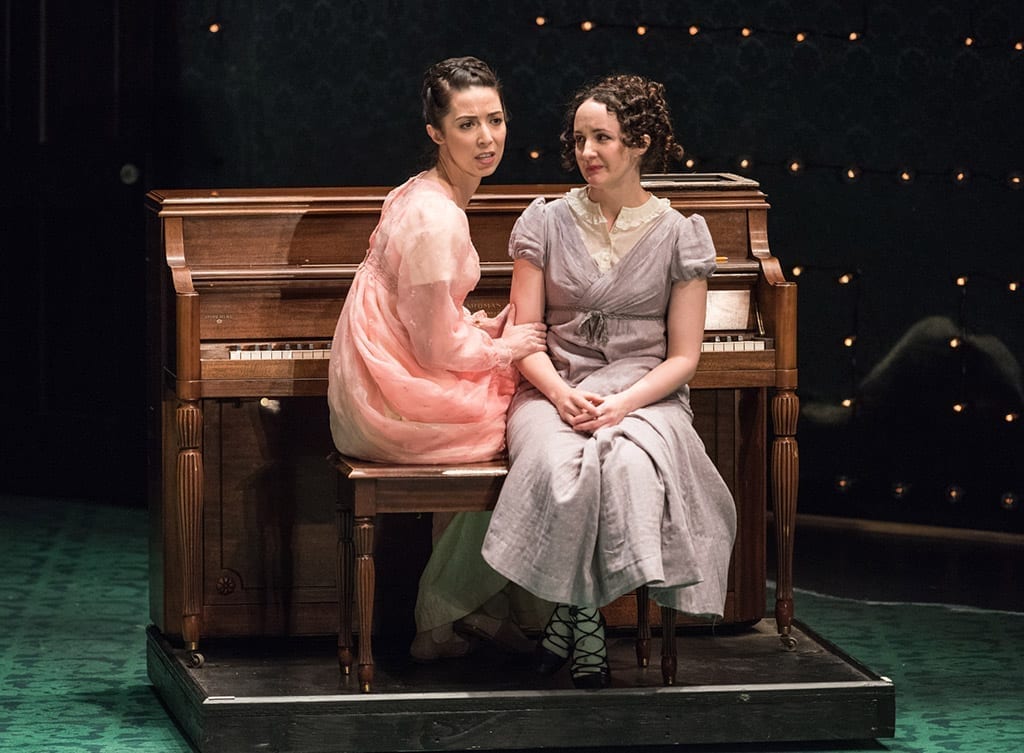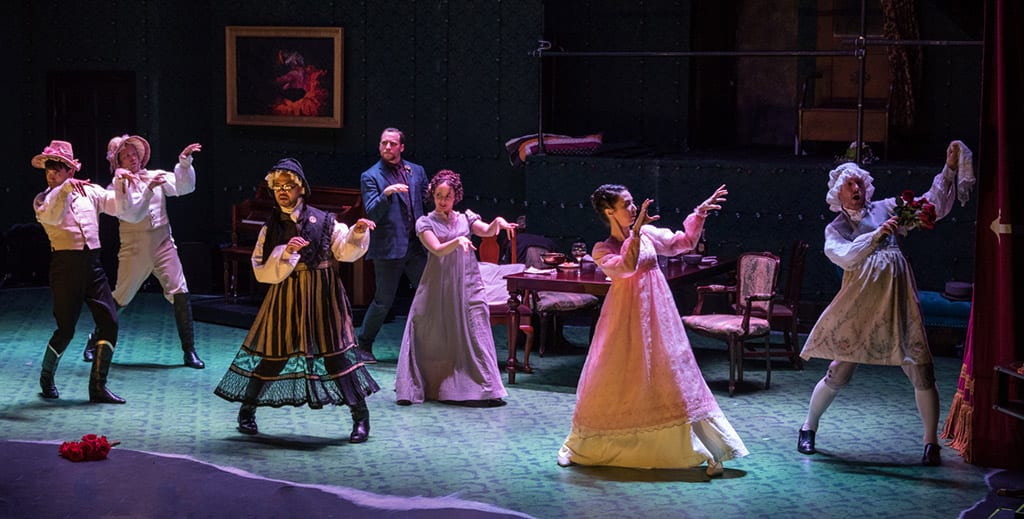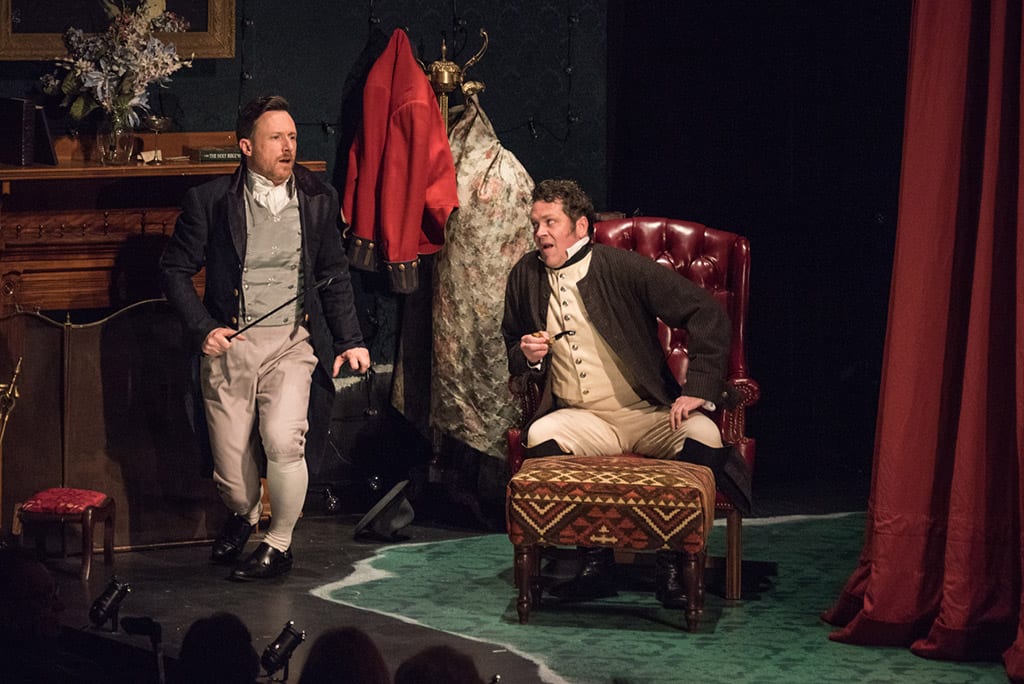With this production of Thackeray’s Vanity Fair comes the age-old moral dilemma: We are who we are. Or are we? Do we have to be? We are bound by who are parents are. Or are we?
William Makepeace Thackeray was interested in just how morality and social mores affect us. His novel, Vanity Fair, is a satire of social aspiration and stratification and just plain survival, with or without morals as defined by society. The concept may have been taken from Bunyan’s The Pilgrim’s Progress and refers to our sinful attachment to worldly things in the never-ending fair held in a town called Vanity. Ultimately the novel questions the moral behavior of characters as they aspire toward happiness, while acquiring money and social position.
Kate Hamill’s dizzying and very physical adaptation, so well suited to her innovative and theatrical talents, focuses on how absurd moral judgements are about how human beings strive to survive and thrive. Brilliantly staged by scenic designer Sandra Goldmark, it is performed in three main playing spaces: Two Regency rooms on either end of the proscenium stage and the red velvet curtain that circles around the central playing area reminiscent of the English music hall. The curtain conceals the whirling and chaotic moments in all the vanity fairs.
Directed with a satirical fury by Eric Tucker who also collaborated with Ms. Hamill’s masterful adaptation of Sense and Sensibility, this theatrical premiere grinds through Thackeray’s vast number of characters and plots with four men and two women, including Hamill as the notoriously manipulative, Becky Sharp who plays her with a sneering red-lipped delight. Becky is poor and possibly therefore understandably and unabashedly conniving. Her friend yet literary antithesis is Amelia Sedley, played with a rich depth of feeling by Joey Parsons. The kind-hearted Amelia is rich and stations above Becky and therefore assumed to be privileged. Both careen through courtships, marriage, childbirth and marital disappointments – each in her own way as women in an era when marriage and economic/social position dominated. (Well, in some ways no different from today.)
Characters they meet and love, male and female, are played by the remaining four male members of the cast – all with distinct and inevitable satiric specificity by Brad Heberlee, Tom O’Keefe, Ryan Quinn and Debargo Sanyal. This choice to have only the two main female characters performed by two women and all other characters to be played by men may support Hamill’s intention for the play to provide “a glimpse into a deep female friendship between two different female archetypes.” She chose this division of gender for her play. She also has created a character, the sardonic Manager (Zachary Fine) who introduces us to the fair of vanities and then also plays Miss Matilda, whose outstanding quality is her flair for flatulence!
Mr. Fine, along with Hamill’s Becky Sharp, repeatedly admonishes us not to judge, since how can we judge a place that “is not a moral place.” This of course assumes that as an audience, we will judge before we are even exposed to the immoral indulgences of Vanity Fair’s characters.
Hamill’s attempt to adapt, condense and entertain is truly ambitiously splendid and theatrical, not just embracing Thackeray’s tome but squeezing it into contemporary relevance, with, for example, dance interludes to songs of Michael Jackson and Beyoncé. At times this carousel of music, movement, theatrical light bulbs, careening furniture, and the dialogue (whew!) obscures the plot. I suppose the intention of this chaos is meant to characterize our conflicting moral natures, dominated by that one trait. And so vanity, thy name is … everyone.





